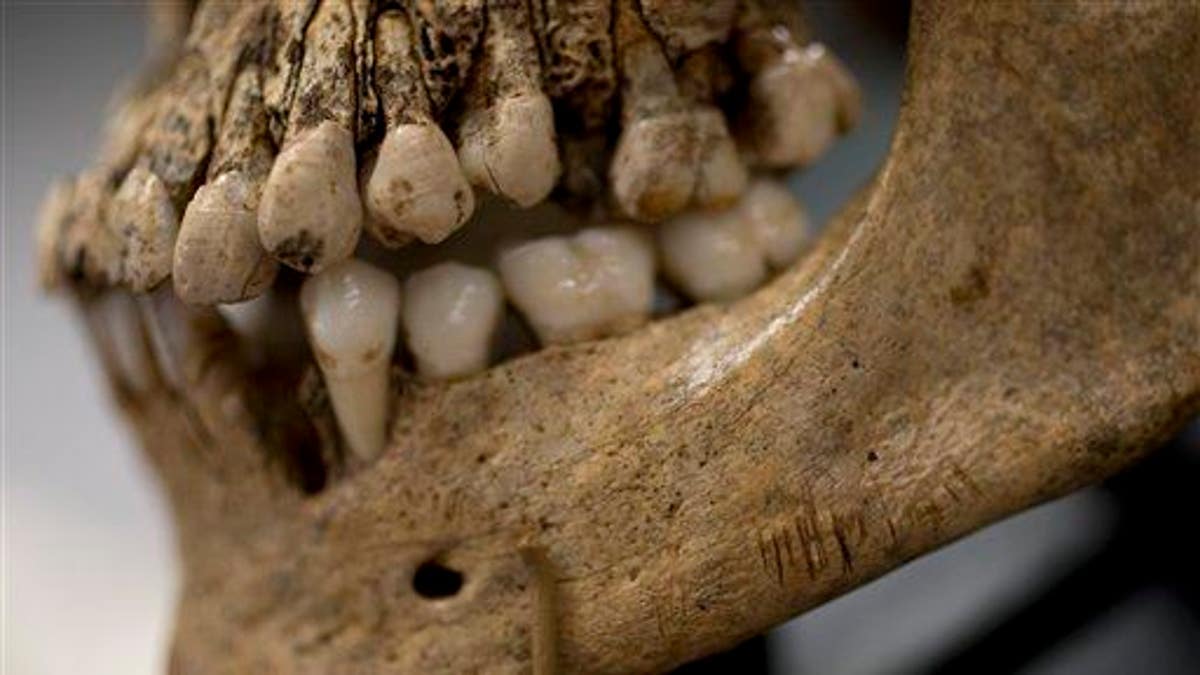
Numerous small knife cuts and punctures in the mandible of "Jane of Jamestown" are seen during a news conference at the Smithsonian's National Museum of Natural History in Washington, May 1, 2013. (AP Photo/Carolyn Kaster)
With evidence of cannibalism persisting throughout many eras and across many lands, scientists recently set out to determine precisely how one known group of cannibals prepared human flesh.
Reporting in the journal Archaeometry, they say the remains of 18 men, women, and children dating to between 700BC and 500BC, found at the Mesoamerican site of Tlatelcomila near present-day Mexico City, bore enough clues to infer whether the bones had been boiled or grilled and even what seasonings were used.
Apparently the ancient cannibals liked a bit of variety; turns out some of the meat was boiled and some was grilled, researchers say. Using a range of tests, including powder x-ray diffraction, scanning electron microscopy, and ultraviolet visible spectroscopy, the team translated what various marks and colors on the bones meant given they appear to have formed at the time of death.
When grilling bones, "the meat juices concentrate around the bone and diffuse into it slightly," so "blood coming from the meat as temperatures increased" resulted in red patches.
But bones that were boiled turned varying shades of yellow, likely because they were cooked at low heat with chillies and other colorful ingredients, reports Forbes.
"The study is a big deal because it ... suggests the flesh-nibblers in the region used the same recipes to prepare humans as they did other food in Mesoamerica," notes Gizmodo.
(In less grisly archaeological news out of Mexico: a Teotihuacan find boosts hope of discovering a royal tomb.)
This article originally appeared on Newser: Archaeologists Learn How Cannibals Prepared Flesh
More From Newser
